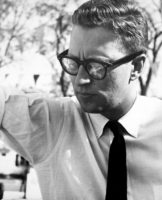Situated prominently at the eastern end of The Hague—not the city in the Netherlands, but a crescent-shaped inlet that feeds into the Elizabeth River as it passes through Norfolk, Virginia—the Chrysler Museum of Art’s newly renovated and expanded Italianate pile opened to the public again last week after 17 months of construction. Local firm H&A Architects designed identical, two-story porticoed gallery wings that flank the main entrance and added 10,000 square feet of exhibition space for American and European painting and sculpture and the museum’s renowned glass collection. The addition—which brings the total programmable space to 220,000 square feet—mimics the classical style of the original 1933 structure and a 1989 building project that unified the exteriors by removing asymmetrical and Brutalist additions completed in 1965 and 1974. “We wanted to maintain the balanced, palazzo house quality of the exterior,” explains museum director Bill Hennessey.
While the architecture may be conservative, not much else about the institution is, starting with its namesake, Walter Chrysler, Jr. The eldest son of the auto tycoon, Chrysler began amassing what would become a world-class art collection while still a student at Dartmouth in the early 1930s. Controversial dealings would eventually run the scion out of New York City, where he once served as the first chairman of the fledgling Museum of Modern Art’s library committee, and later the artists’ colony in Provincetown, Massachusetts, where he maintained a museum in a former church building during the 1960s.
In 1971, Chrysler donated his collection—which at one point reportedly included 340 Picasso’s—to what was then the Norfolk Museum of Arts and Sciences in the hometown of his second wife. Today, the majority of the museum’s 30,000 works stem from that donation. The one remaining Picasso—Chrysler traded away the rest for works by Old Masters—is a monumental mural from 1928 that was part of the museum-wide reinstallation and is on view for the first time in over 20 years.
Part of the $24 million building project, the reinstallation takes advantage of the opened-up interiors, where ceiling heights were raised, galleries were painted in a variety of bright colors, an elevator was moved, blind alleys were eliminated, and stunning new vistas—including across the central Huber Court —were created. “We found unknown pockets of space and can give a far clearer picture of our strengths now,” says chief curator Jeff Harrison. Those strengths include over 10,000 glass objects and a state-of-the-art glassblowing facility opened in 2011 across the street that rival more renowned collections and facilities in Toledo, Ohio, and Corning, New York.
Free to the public, the Chrysler employs “gallery hosts” that engage visitors and double as security guards. Contemporary works positioned among historic ones serve as “activation pieces” to encourage dialogue. From May 17-26, the Chrysler Museum hosts Dutch artist Florentijn Hofman's Rubber Duck. The 40-foot whimsical bath toy will float in The Hague following appearances around the world. According to Hennessey, “We’re not the biggest or the richest museum, but this gives us the advantage of being light on our feet."
















Post a comment to this article
Report Abusive Comment